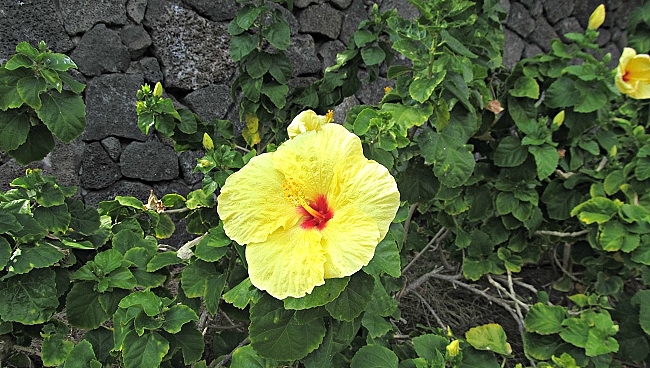Hawaii, a paradise in the middle of the Pacific Ocean, is renowned for its breathtaking landscapes, vibrant culture, and diverse wildlife. The unique combination of isolation, varying climates, and ecosystems across the islands has led to the evolution of a plethora of animal species, many of which are endemic to Hawaii. This article dives into the incredible world of Hawaiian wildlife, covering birds, marine life, land mammals, insects, and the conservation efforts in place to protect these amazing creatures.
The Unique Ecosystem of Hawaii
Hawaii’s ecosystem is unlike any other in the world. The islands were formed by volcanic activity, creating diverse habitats ranging from lush rainforests to arid deserts. This diversity has allowed many species to thrive and adapt over time.
Geographic Isolation
Hawaii is the most isolated archipelago in the world, located over 2,000 miles from the nearest landmass. This isolation has fostered a unique evolutionary environment. Many animals that inhabit the islands have developed characteristics that distinguish them from their mainland counterparts. For example, certain species of birds have adapted their feeding habits to the specific flowers found only in Hawaii.
The Role of Climate
Hawaii’s climate varies significantly from one island to another, influenced by factors such as elevation, wind patterns, and proximity to the ocean. For example, the windward sides of the islands receive more rainfall, resulting in lush forests, while the leeward sides are often dry and arid. This climatic diversity supports a wide range of habitats, each hosting distinct animal populations.
Endemism in Hawaii
Endemism refers to species that are found only in a specific region and nowhere else on Earth. Hawaii is known for its high levels of endemism, especially among birds, insects, and plants. It is estimated that approximately 90% of native terrestrial birds and around 60% of native plants in Hawaii are found nowhere else.
The Birds of Hawaii
Hawaii is often referred to as a “birdwatcher’s paradise.” The islands host numerous bird species, many of which are endemic and showcase vibrant colors and unique behaviors.
The Nene (Hawaiian Goose)
The Nene, or Hawaiian Goose, is a symbol of conservation efforts in Hawaii. Once close to extinction, the Nene is now the state bird of Hawaii. They have adapted to the islands’ landscape and can often be seen waddling around golf courses and parks. These geese primarily feed on grasses and berries and are known for their gentle demeanor.
Nene Recovery Efforts
Conservation efforts for the Nene include habitat restoration and breeding programs. Organizations have worked tirelessly to increase their population, and today, visitors can often see them in their natural habitat.
Hawaiian Honeycreepers
Hawaiian Honeycreepers are a fascinating group of birds that have diversified into various species, each with distinct characteristics and feeding habits. Their beaks are specially adapted for different food sources, ranging from nectar to seeds.
Species Diversity
Some notable species include the ‘I’iwi, known for its bright red plumage and long, curved beak, ideal for extracting nectar from flowers. Another is the ‘Apapane, which also feeds on nectar but has a striking black and red coloration. You Can Also Read This How Old Do You Have to Be to Rent a Car in Hawaii?
The Hawaiian Rail
The Hawaiian Rail, or “Alae kea,” is a small, flightless bird that thrives in wetland habitats. With its dark plumage and red bill, it is well adapted to its marshy environment. Unfortunately, this bird is critically endangered due to habitat loss and introduced predators.
Marine Life Around the Islands
The waters surrounding Hawaii are rich in biodiversity, with numerous marine species calling it home. From colorful fish to magnificent sea turtles, the ocean is an integral part of Hawaii’s wildlife.
Hawaiian Green Sea Turtle (Honu)
The Hawaiian Green Sea Turtle, known locally as “Honu,” is an iconic marine animal. These gentle creatures can be seen swimming in the warm waters or basking on the beaches. Honu primarily feed on seagrass and algae, playing a crucial role in maintaining the health of marine ecosystems.
Conservation Status
Due to threats like habitat loss and hunting, Honu are classified as endangered. Conservation efforts are focused on protecting nesting sites and reducing human impact on their habitats.
Hawaiian Monk Seal
The Hawaiian Monk Seal is another unique marine mammal found only in Hawaiian waters. These seals are known for their playful nature and are often seen lounging on beaches or swimming in the ocean.
Threats and Protection
Unfortunately, Hawaiian Monk Seals are also endangered. Conservation initiatives include monitoring populations, protecting haul-out sites, and educating the public about the importance of these animals.
Coral Reefs and Their Inhabitants
Hawaii’s coral reefs are among the most diverse ecosystems on the planet. They provide habitat for countless species, including colorful reef fish, invertebrates, and marine mammals.
Notable Fish Species
Fish such as the Humuhumunukunukuapua’a, the state fish, are notable for their vibrant colors and unique shapes. This fish is known for its intricate patterns and is often a highlight for snorkelers and divers.
Land Animals of Hawaii
While birds and marine life often steal the spotlight, Hawaii also has unique land animals that contribute to its rich biodiversity.
The Hawaiian Hoary Bat
The Hawaiian Hoary Bat is the only native land mammal in Hawaii. This small bat plays a vital role in the ecosystem by helping to control insect populations.
Characteristics and Habitat
The Hawaiian Hoary Bat is known for its distinctive fur, which is gray with white tips. It roosts in trees during the day and hunts for insects at night.
The Hawaiian Monk Seal
The Hawaiian Monk Seal is the only seal species native to Hawaii and is critically endangered. They can often be seen lounging on sandy beaches or swimming in the warm coastal waters.
Life Cycle and Behavior
Hawaiian Monk Seals are known for their playful nature, often seen swimming and playing in the surf. They breed on remote beaches, and conservation efforts are in place to protect their nesting sites.
Invasive Species Impact
Hawaii has faced challenges from invasive species that threaten its native wildlife. Animals such as rats, cats, and mongooses have introduced new pressures on native bird populations, leading to declines in their numbers.
Insects and Other Small Creatures
Hawaii’s unique insects are often overlooked but are essential to the ecosystem. Many of these insects have evolved to fill specific niches in the environment.
The Hawaiian Happy-Face Spider
The Hawaiian Happy-Face Spider is an intriguing species known for its colorful facial patterns. Found primarily on the islands of Maui and Hawaii, these spiders are crucial for controlling insect populations.
Habitat and Behavior
These spiders create small webs in the foliage and feed on various insects. Their unique patterns have made them a subject of study and interest among researchers.
The Kamehameha Butterfly
The Kamehameha Butterfly is another endemic species that thrives in Hawaii. Known for its striking colors, this butterfly is essential for pollination.
Life Cycle and Habitat
The Kamehameha Butterfly undergoes a complete metamorphosis, starting as an egg, then moving to a caterpillar stage before emerging as a butterfly. It primarily feeds on native plants, making it crucial for maintaining the health of Hawaii’s ecosystems.
Conservation Efforts in Hawaii
Given the unique wildlife and the threats they face, conservation efforts in Hawaii are critical. Many organizations and individuals are dedicated to preserving the islands’ natural heritage.
Habitat Restoration Projects
One of the primary focuses of conservation in Hawaii is habitat restoration. This involves removing invasive species, planting native vegetation, and restoring ecosystems to their natural state.
Community Involvement
Local communities play a vital role in conservation efforts. Many volunteers participate in cleanup events, native planting days, and educational programs to raise awareness about the importance of protecting Hawaii’s wildlife.
Education and Outreach
Educating residents and visitors about Hawaii’s unique animals is essential for conservation. Many organizations conduct workshops, guided tours, and school programs to teach people about the importance of biodiversity and the need for conservation.
How You Can Help
As residents or visitors to Hawaii, there are many ways you can contribute to conservation efforts.
Responsible Tourism
Practicing responsible tourism is crucial for minimizing your impact on the environment. Stay on designated paths, avoid disturbing wildlife, and follow guidelines when visiting natural areas.
Supporting Local Conservation Organizations
Consider supporting local conservation organizations through donations or volunteering. Many groups focus on habitat restoration, species monitoring, and community education.
Raising Awareness
Share what you’ve learned about Hawaii’s unique wildlife with friends and family. The more people understand the importance of protecting these animals, the more support there will be for conservation efforts. Visit the home page of Hawaiian Page
Conclusion
Hawaii is home to an incredible array of animals, each contributing to the islands’ rich biodiversity. From the vibrant birds and marine life to the unique land mammals and insects, every species plays a role in maintaining the delicate balance of the ecosystem. Understanding what animals live in Hawaii is crucial for fostering appreciation and support for conservation efforts. By learning about these amazing creatures, we can all help protect Hawaii’s natural heritage for generations to come.



